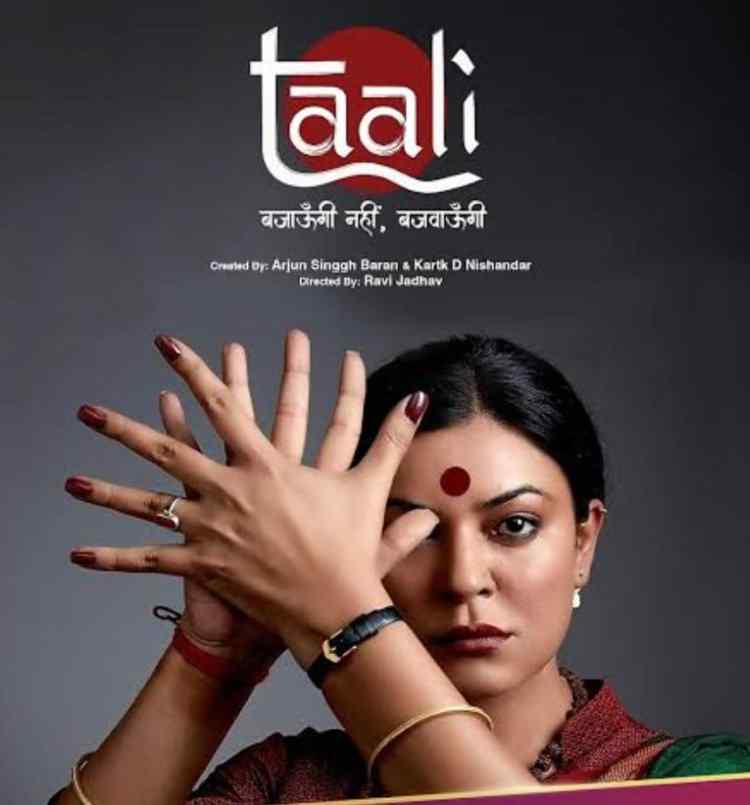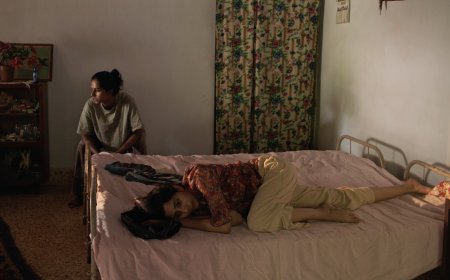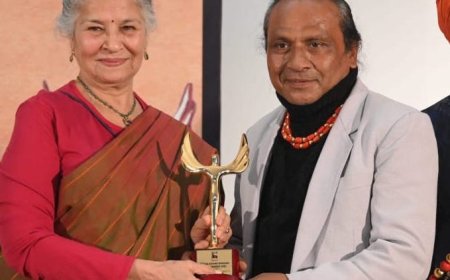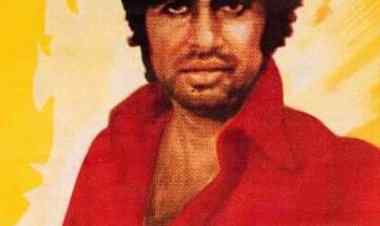TAALI AND OTHER CINEMATIC EUNUCHS AND TRANSGENDERS

In this analysis, Dr. Shoma A. Chatterji, a renowned Indian film scholar and author, examines the web series titled "Taali."
Within the ambience of the new web series called Taali, featuring Susmita Sen as a transgender Gauri, born a male but followed later with a series of surgeries to become a female, it is interesting to probe a bit into this marginalized, ignored and casually treated transgender community in India.
the dictionary as a castrated man. A hermaphrodite is a creature possessing both the male and
female organs. A transvestite is a person who chooses a sex other than the one he/she is born as.
Facts tell us that neutralized neutral-sex persons are a rarity. The hijra population in India has a
well-defined group structure and regional affiliations with a group head. Though Balucharaji is
their Goddess and they revere Ambe Mata, there are religious demarcations. Most of them identify
with the female sex. Within the eunuch community, incest is absent. Most of them have worked
as prostitutes at one time or another. Serena Nanda’s research shows that some persons labeled
hijra in India are both prostitutes and celebrants of rites of passage.
Hindu epics, puranas and mythology are replete with the courageous feats of true hermaphrodites who, within these scriptures, have always been referred to as the ‘third sex.’ “But after the Arab attack in the eighth century, castration of males in order to put them on specific jobs began on a large scale” writes S. N. Ranade[i]. Centuries ago, guards to king’s harems were castrated to ensure that no co-habitation between royal wives and guards took place. This led to the creation of the ‘third sex’ – the castrated eunuchs. But it was not the end of the story. These sexless wonders realized that perversions did exist in society. Many males found them distractingly attractive. And the potential ‘femme fatale’ was born.
few sources they have of eking out a livelihood.
According to the Psychology Dictionary, an androgynous person presents a mixed personality in which he/she displays psychological characteristics typically assigned to men and women as opposed to one or the other such as being nurturing and aggressive. In other words, the androgynous personality may not fit into a stereotypically male or female gender role but has a personality that exhibits male and female traits.[ii]
Hindi cinema has paid lip service to this community very marginally. The earliest memory is of the Kunwara Baap by Mehmood in which this producer-actor hired real eunuchs to perform a song-dance number which boosted the market value of the film greatly. Sadak (1991) was a film that featured a eunuch character within a brothel as Maharani, a very brutally cruel agent-like character performed by the late Sadashiv Amrapurkar who bagged the Filmfare Award for the Best Supporting Actor the following year. Mahesh Bhatt’s Tamanna (1997) also featured a eunuch character drawn from real life portrayed brilliantly by Paresh Rawal. It revolved around the story of a eunuch who dances at weddings and collects alms from the families of affluent newborns. With his earnings, he brings up a little girl whose father had given her up to be killed. The late Irrfan Khan played a hijra in the film Haasil. Shabnam Mausi (2005) was based on the true story of Shabnam Mausi, who was India’s first transgender elected representative. The character was played by Ashutosh Rana. But the film sunk without a trace and forgotten over time.
Kalpana Lajmi’s film Darmiyaan (In Between) released in 1997, narrated the tragic story of a famous film star who, her whole life long, hid the fact that she had given birth to a child who turned out to be a eunuch and told everyone that the child was her brother. The boy learnt while at play with friends that he was a eunuch. This tragedy destroyed his life till towards the end of the film, we find him mothering his own mother who was eternally trapped in the role of Anarkali she was once famous for. Through Darmiyaan, Kalpana Lajmi strips all its frills of glamour to reduce it to the raw reality of the pain of actually being born biologically as a person with an ambiguous gender-identity.
In Shyam Benegal’s Welcome to Sajjanpur (2008) which is a beautiful tribute to the lost art of writing letters makes a passing but powerful reference to a hijra woman who fights the elections but is forced to commit suicide because of the socio-political pressures she could not bear up to.
Taali, with the protagonist portrayed by none other than Susmita Sen who wore the Miss Universe Crown some decades ago, adds to the sales and marketing value of the web series being cast on Jio right now, tries to set an example of a transgender becoming one to lead the entire marginalized community of transgenders in Mumbai.
Taali is inspired from the true story of a transgender woman named Sreegauri Sawant, born as Ganesh, who played a crucial role as one of the petitioners in the National Legal Services Authority (NALSA) case. The case, filed in 2013, led to the Supreme Court’s final verdict in 2014, recognizing transgender individuals as the third gender.
Where is Sreegauri Sawant now? The film does not tell but shows her after the film has ended, smiling and posing next to her cinematic parallel, Susmita Sen who throws up almost a cruel contrast between the real person and her cinematic representation. At the end of the film, loud, highly glamorized and romanticized beyond credibility, one wonders whether the writers, Arjun Singgh Baran and Kartik Nishandar, and the director, Ravi Jadhav, genuinely wished to hold a mirror to a brave transgender woman drawn from real life who fought for her kin and won the legal battle in the end, or, whether they wished to piggy-back ride the on an agenda-based story to win the hearts of the OTP audience.
The subject – of a real-life transgender woman – could have been turned into an interesting documentary film. But this fiction-layered story overlaid by a beautiful woman who was once Miss Universe who plays the most beautiful transgender in the world breaks the seriousness of the subject. Never mind the beauty of the protagonist, never mind the brilliant performance of Sen, never mind the thin storyline that leaves out the very basic premise of its title, Taali would have turned out to be a classic example of a unique film.
The sound of the taalis remains silent right through the film because we never get to learn what these women, apart from occasionally prostituting themselves, do for a living, except one who baby sits at a crèche, as not once do we see these women clapping for alms at traffic signals. Gauri (as known in the film), once managed to bag a job of a teacher but we see her only once teaching in the entire film. There are absolutely no sign of any physical or mental struggle evident on her face or her body. In fact, her peaches-and-cream skin can easily lend itself to brands for face creams. The massive bindi on her forehead, the heavy jewellery she adorns on her person, the very expensive traditionally Maharashtrian saris she wears through the film must be seen to be believed.
The taalis are explosively silent but glamour and the romanticising of the transgender identity is roaring and loud!
***
What's Your Reaction?


































































